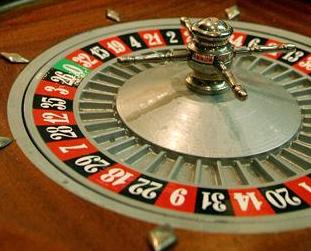- Roulette Strategy Follow The Leader Lyrics
- Roulette Strategy Follow The Leader Video
- Follow The Leader Game Ideas
We offer the Follow-the-leader betting system to readers of the portal Casinoz who are indifferent to roulette. This is a very simple strategy that does not require a large bankroll and profound knowledge. In addition, it is suitable for users who do not prefer the aggressive playing style.
What Is Follow-the-Leader Pricing?
Follow-the-leader pricing is a competitive pricing strategy where a business matches the prices and services of the market leader. That is, a company will follow the pricing of the largest player in the industry. For example, when the market leader lowers the price of its goods, the company will lower its price to the same level.
Key Takeaways
- The follow-the-leader pricing strategy involves matching the prices of the market leader.
- The strategy can lead to price wars if the market leader decides to counter with price increases or cuts.
- Follow-the-leader pricing is often used in oligopolistic sectors where few companies operate, such as grocers.
- Follow-the-leader pricing is a competitor-based pricing strategy—where other strategies include pricing based on costs or the customer.
Understanding Follow-The-Leader Pricing
Roulette Strategy Follow The Leader Lyrics

Follow-the-leader pricing may force the business to continually adjust its pricing, especially if the market leader counters this strategy by continually raising and lowering prices. However, this can lead to price wars.
Roulette Strategy Follow The Leader Video
Price wars happen when companies intentionally undercut each other. For example, when one company lowers its price to meet the loss leader, the market leader may further cut its prices to keep or gain more market share. This can happen for an extended period, spiraling into a price war. Major examples of price wars have been with Apple and Samsung and Walmart and Amazon.
Special Considerations
A follow-the-leader pricing strategy is most suitable for larger companies with the economies of scale to achieve low unit costs and compete on price. It is commonly found in oligopolistic sectors, in which the market is shared by a small number of producers or sellers, such as big-box retailers or grocery chains.
Because small businesses and start-ups typically have higher costs and lower margins than bigger businesses they may not be to compete with the industry leaders on price. Instead, they have to use service and other offerings to differentiate themselves. Follow-the-leader pricing is an alternative to more strategic pricing strategies for entering new markets, increasing market share, or defending markets from new entrants.
Follow-the-leader pricing is perhaps most evident in retail, where many major retailers—such as Target and Walmart—are pricing match many product prices from market leader Amazon.
Types of Follow-the-Leader Pricing
Follow-the-leader pricing is a competitor-based pricing strategy. This is unlike cost-based, customer-based, or product-based pricing. Cost-based pricing uses the cost to create the product as the bellwether for pricing. From there a company will add a desired margin or profit to the price.
Customer-based pricing includes psychological pricing, where a company will price appeal a customer’s psyche. That is, the product will be priced to appear cheaper than it really is, such as $99.99 versus $100. Product-based pricing is pricing a product based on a bundle or captive-products, among others. Captive-product pricing involves pricing a product (such as razor blades) based on its reliance on being used with the main product (such as a razor handle).
Follow-the-Leader vs. Loss Leader Pricing
Among competitor-based pricing strategies is follow-the-leader pricing and loss leader pricing, as well as going rate pricing. Going rate pricing involves pricing a product based on its direct competitors.
Follow The Leader Game Ideas
Loss leader pricing involves selling a product for a low price, usually at a loss, to gain market share. Stores may use loss leader pricing for certain products around the holidays to get shoppers to visit its stores, with the hope they’ll also purchase higher-margin products.